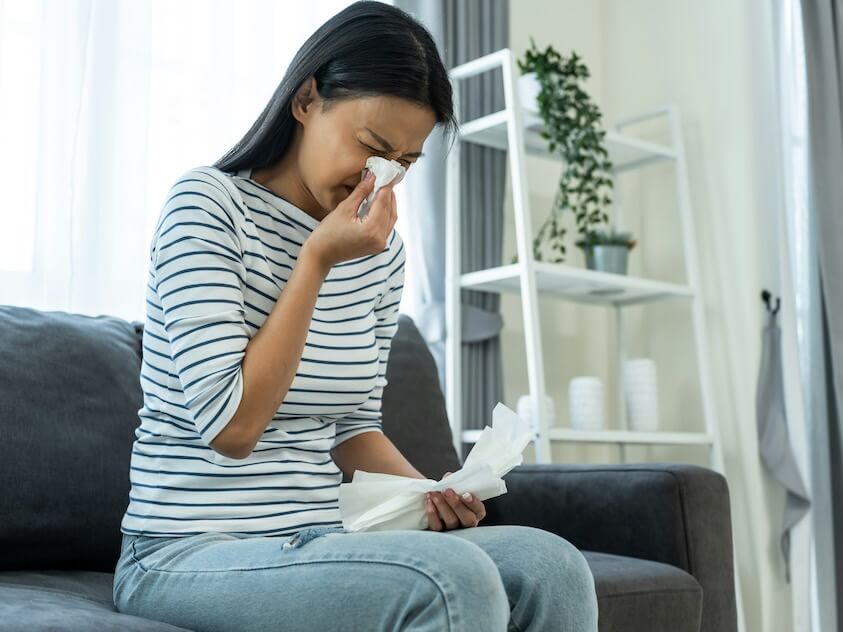Burning, itching, and redness can sneak up from everyday products you trust. Items like laundry detergent, earrings, or ointments often contain ingredients that irritate the skin—especially for people prone to allergies or sensitivities. These reactions may not happen right away, making it harder to spot the cause.
Understanding which products can lead to allergic flare-ups helps people make smarter choices at home. Reading ingredient labels and knowing common irritants—like nickel, latex, or strong fragrances—can reduce the risk of discomfort and keep skin reactions from disrupting daily life.

Earrings That Cause Irritation and Rash
Wearing the wrong earrings can lead to irritation, especially for people with sensitive skin. Choosing hypoallergenic earrings made from metals like ASTM F136 titanium or 316L surgical steel can help avoid allergic reactions, since both are free of nickel—a common skin irritant. Safer metal options like titanium and surgical steel keep piercings calm and reduce the chance of redness or swelling.
Flat-back studs add another layer of comfort by lowering pressure on the piercing and preventing friction while sleeping. Their smooth surface also reduces the risk of snags on pillowcases or hair. Cheap metal plating, on the other hand, often causes itchy, inflamed skin. Checking materials before wearing new earrings is a smart habit for anyone prone to flare-ups.
Fragrance-Heavy Laundry Products Lurking in Your Closet
Scented laundry products are a common source of allergic flare-ups. Detergents and fabric softeners often contain chemical additives like optical brighteners and quaternary ammonium compounds, which can trigger delayed skin reactions after contact with warm skin. Rashes, itching, or discomfort may appear hours later, making the cause harder to trace.
Some ingredients, including terpenes and aldehydes, linger in fabrics and stay active through multiple washes. Compounds like these can also affect breathing in people with sensitivities. Choosing fragrance-free or hypoallergenic formulas helps reduce the risk. Taking a moment to check the label can prevent irritation before it begins.
Latex-Based Household Gloves and Bands
Latex allergies are more common than many realize. Even brief contact with latex gloves can lead to itching, redness, or swelling—especially in warm, damp conditions where skin absorbs more of the proteins that trigger reactions. The risk increases with powdered gloves, which release latex particles into the air that can be inhaled.
For those with sensitivities, latex-free and accelerator-free gloves offer a safer alternative without sacrificing protection. Before using new gloves, testing them on a small patch of skin—such as the inner forearm—can help avoid a full reaction. Taking a moment to check glove materials listed on the packaging can also prevent unexpected irritation. These small precautions add up to more comfortable and safer routines at home.
Triple-Antibiotic Ointments That Sting More Than They Soothe
Healing ointments are often expected to help, but some cause more irritation than relief. Ingredients like neomycin and bacitracin, found in many triple-antibiotic creams, are frequent triggers for contact dermatitis. When applied to broken skin—especially on the face or hands—they may lead to redness, itching, or oozing.
Symptoms can resemble infection, which often leads to confusion and unnecessary concern. Switching to polysporin, which excludes neomycin, may reduce the chance of an allergic reaction. Polysporin usually contains only polymyxin B and bacitracin. When uncertain about what to apply, asking a doctor or pharmacist can help avoid unwanted side effects.
Paraphenylenediamine-Based Hair Dyes
Hair dyes containing paraphenylenediamine (PPD) are known to cause allergic reactions in a significant number of users. Once combined with a developer, PPD becomes more chemically reactive and may trigger symptoms beyond the scalp—affecting the face, neck, or ears. Discomfort might not appear immediately, which can make the source of irritation harder to pinpoint.
Marketing terms like “natural” or “organic” offer no guarantee of being PPD-free. Many popular brands still include it in low concentrations. Scanning for ingredients with names like “para” or “phenylenediamine” can help flag potential triggers. A small patch test behind the ear or on the inner arm offers a safer starting point.
Everyday products that seem harmless can quietly trigger irritation or allergic flare-ups. Earrings made with low-quality metals, strong-smelling detergents, latex gloves, and medicated creams may all lead to redness, itching, or swelling. Even small amounts of certain ingredients—like nickel or paraphenylenediamine—can cause discomfort over time. Making thoughtful swaps, such as choosing unscented laundry formulas, titanium earrings, or latex-free gloves, can reduce surprises and keep skin feeling calm. Taking a few seconds to scan ingredient lists or test products on a small patch of skin adds an extra layer of protection. Skin health often starts with small, consistent choices.
People also read this: Can Anyone Start a Podcast That People Actually Listen To?

